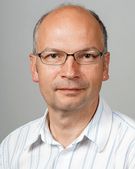GOLIAT - 5G Exposure, Causal Effects, and Risk Perception through Citizen Engagement
Project Abstract
There is few knowledge about potential health effects of everyday-emerging applications of wireless technology. The importance of this concern is more remarkable among young people and workers, the most sensitive and exposed groups, respectively. In GOLIAT (5G expOsure, causaL effects, and rIsk perception through citizen engAgemenT) project (https://projectgoliat.eu/), as a part of the European cluster on electromagnetic fields and health (https://www.emf-health-cluster.eu/), we will i) develop next-generation exposure assessment methods to estimate radiofrequency electromagnetic fields (RF-EMF) dose; ii) identify and exposure assessment of new occupational RF-EMF sources resulting from 5G deployment; iii) assess neuropsychological effects among young people, and iv) quantify potential health impacts of exposures at the population level; v) assess effects of 5G on brain function, thermoregulation, and radical stress using laboratory experiments; vi) identify effective means of exposure reduction; vii) understand risk perceptions to RF-EMF and 5G; viii) address RF-EMF concerns and misconceptions by applying engagement model; ix) disseminate GOLIAT’s results and integrate them into policy actions; x) implement a broader analysis of the societal and ethical implications of RF-EMF and 5G; xi) develop a FAIR data infrastructure; and xii) perform activities related to the EMF and health cluster.
Swiss adolescent cohort HERMES
As part of GOLIAT, Swiss TPH conducts the HERMES (Health Effects Related to Mobile phone usE in adolescentS) cohort study on the association of RF-EMF exposure and health in adolescent in Switzerland. The primary objective is to investigate the effect of RF-EMF and transportation noise on cognitive performance, behavioural problems and health related quality of life including sleep quality in adolescents aged 11 to 14 years. The secondary objective is to investigate the effect of various aspects of eMedia use such as extensive night-time or social media usage on these outcomes
In total, 900 adolescents from 7th or 8th school grade in Northwest and Central Switzerland will be included for a baseline and a follow-up investigation one year later. Examination includes six standardized and computerized cognitive tests and questionnaires. Further, objective information on RF-EMF exposure and sleep quality will be obtained from a subgroup of 150 adolescents by means of a one week measurement campaign.
HERMES 3 expands on the insights from previous HEREMS 1 and 2 cohorts, conducted between 2012 and 2015, by including additional cognitive domains and considering changes in wireless communication technologies. Together with similar cohorts conducted by GOLIAT partners, the study is expected to considerably increase our knowledge on the effects of eMedia use by differentiating between biophysical and psychological (non-biophysical) pathways.
Co Applicant(s)
Related Publications
All PublicationsChikha W.B, Zhang Y, Liu J, Wang S, Sandeep S, Guxens M, Veludo A.F, Röösli M, Joseph W, Wiart J. Assessment of radio frequency electromagnetic field exposure induced by base stations in several micro-environments in France. IEEE Access. 2024;12:21610-21620. DOI: 10.1109/ACCESS.2024.3363914
Veludo A.F, Stroobandt B, Van Bladel H, Sandoval-Diez N, Guxens M, Joseph W, Röösli M. Exploring RF-EMF levels in Swiss microenvironments: an evaluation of environmental and auto-induced downlink and uplink exposure in the era of 5G. Environ Res. 2025;266:120550. DOI: 10.1016/j.envres.2024.120550
